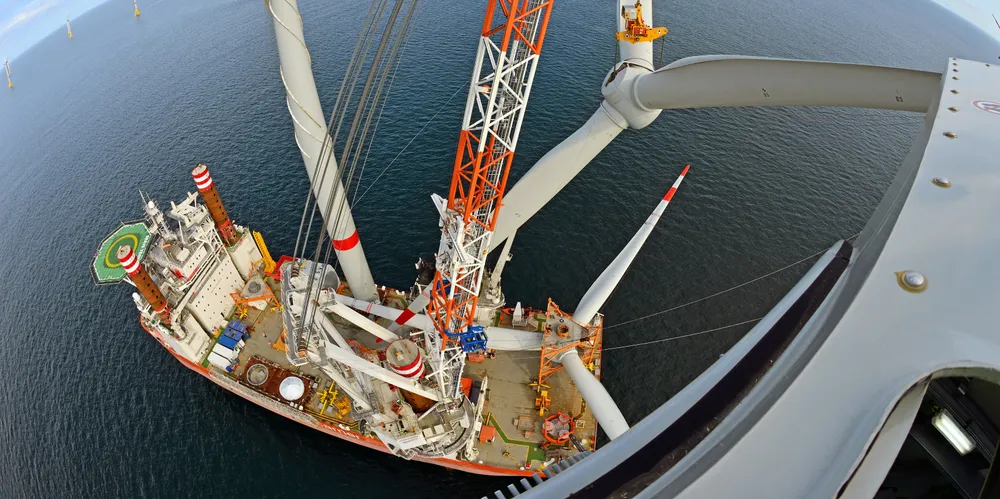'We know what it takes' | Winners Fred Olsen and EDF shift Irish wind to gigascale
Partners say shared approach can tackle challenges such as planning to get 1.3GW Codling in the water by 2030

Their teams had just won the biggest prize in a green power auction that is set to transform Ireland’s energy economy for ever but Lars Bender and Matthieu Hue were already looking forward not back.
But they know better than most that, along with the three other successful fixed-bottom projects in the auction, Codling – the biggest of the winners – now has to get Ireland from 25MW to a multi-gigascale offshore wind base inside seven years, with all four seen as crucial to the nation meeting its 2030 target of 7GW.
The optimism is borne out of a profound sense that the auction finally moves the dial for Irish offshore wind after decades of frustration that some of Europe’s best wind resources were going untapped, save for the solitary Arklow Bank project (the 25MW mentioned above) that has been spinning alone in Ireland’s waters since 2004.
The Irish government expressed itself delighted with the average €86.05/MWh ($93.80/MWh) cost of the output across the winning projects, with energy minister Eamon Ryan hailing one of the lowest prices paid by an emerging offshore wind market in the world.
The precise winning price for Codling's 20-year power deal remains confidential, but against a background of unprecedented uncertainty in energy markets over key areas such as electricity pricing, supply chain availability and inflation, how tough was it to come up with a bid that was both competitive and underpins the project’s viability?
The two CEOs reference some protections built into the process by the government, for example around indexation, but predominately cite a mutual benefit that comes through a partnership that began three years ago, when EDF Renewables joined Norway's Fred Olsen Seawind in advancing Codling.
'Shared perspectives'
Hue said: “We are very different organisations but used to partnering with people. The supply chain knowledge of Fred Olsen is very good. We provided a global view... we have numerous projects under our belt and have a large team, so we can draw from expertise in many disciplines.
“We really shared our perspective in the final week [before the auction]. If we hadn’t done that, we probably wouldn’t be here talking to you.”
According to Hue: “We know what it takes to deliver the project. There is a grid element, there is a supply chain element, there is a planning element.
“We both have relationships with the supply chain [and the] ability to structure the project in different ways depending on where the supply chain is.
“There are uncertainties – there are always uncertainties, and there are more than there used to be. The question is, as an industry – how do we tackle them together? What is crucial is the level of engagement we have, with a local team in Ireland.”
'Planning absolutely key'
A joined-up approach will certainly be key to overcoming one of the biggest challenges facing the auction winners – the lack of planning consent for their projects, which must now be secured in a timely manner.
The Irish wind industry has raised repeated fears that the nation’s planning authorities will simply not have the staff or expertise to process multiple, multi-billion infrastructure projects at once.
Bender said years spent getting ready by the Codling project team should now bear fruit: “A lot of the preparation work is already done. What is important is dialogue between developers and the government. Everyone has the same aim here, to contribute to Ireland’s 2030 target.”
Hue added: “There’s a good understanding of the process to go through planning. Projects have had to be super-diligent preparing our planning submission in advance. The review by the planning authorities here will be absolutely key [but], the resources point is… a known quantity that we will have to deal with that level of work on the planning authority side.”
What about another possible hurdle, the grid connection? Bender said: “There is a way to go before we have a grid connection agreement but there has been progress, we have a good visibility of where to connect, how to connect.”
As for ports, Hue points to Belfast as a possible option for installation operations – although he is keen to stress nothing has been settled – while the joint venture has publicly said it is targeting Wicklow for its O&M base.
The turbines that will power Codling have also not yet been decided, with a number of options being considered. The same goes for the mechanisms for financing a project that the partners will only specify as being “multi-billion euros”.
Bender said: “For all contractors we’re still looking at all possibilities. On financing – we need to discuss that as partners, we haven’t made a firm decision, but of course as a basis for the project we’ve looked at project finance.”
(Copyright)